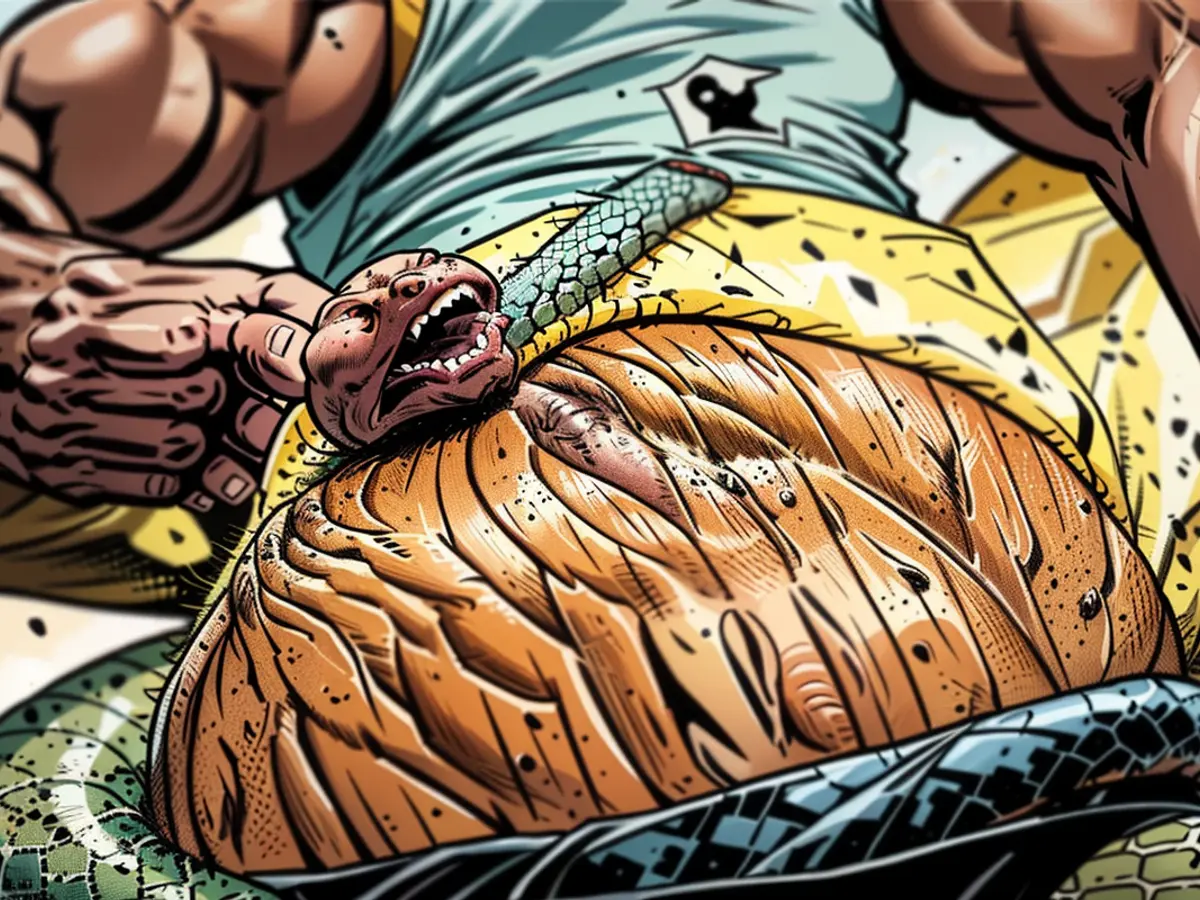Frankfurt - Hungry Anaconda back in the Museum
One of the most famous exhibits of the Senckenberg Natural History Museum is back: the Anaconda that swallows a capybara. For over a year, the approximately 100-year-old specimen was being restored. Now, the spectacular object is back. To protect it, it will be displayed in a new temperature- and humidity-regulating vitrine.
The preparators repaired cracks, removed contaminants, and placed each hair on the capybara's rear end individually, as Senckenberg preparator Udo Becker and restorer Kathrin Sündermann reported. They received assistance from the Frankfurt Zoo and other museums, as the restoration of the object was described by Senckenberg as "as multi-layered as an Old Masterpiece."
From 100 Mark to priceless value
"This object evokes emotion," said Research Director Andreas Mulch at the unveiling of the vitrine, "and we need that emotion for a responsible approach to nature."
According to the museum's annals, the Anaconda was obtained in 1924 by a trophy hunter at the Amazon in Brazil. In 1925, the then director of the Senckenberg Museum bought the snake skin from a Hamburg natural history dealer for 100 Marks, which is approximately 430 Euros today. "This exhibit is now priceless," Mulch said.
The pair was quite a spectacle - too much so
Museum Director Brigitte Franzen admits that the scene is no less impressive: the five-meter-long snake probably caught its prey beforehand. Then it opens its jaws wide and coils itself over it. Capybaras, after all, are the largest rodents in the world. The Anaconda was then satiated by one for a year.
Over the past 100 years, the pair has experienced a lot. During World War II, it was stored in a barn in North Hesse, later lent out by a department store for advertising purposes. Damage was caused during these periods, which had to be repaired and retouched, as reported by restorer Kathrin Sündermann.
"Our Mona Lisa"
The 20-person team received assistance from the Frankfurt Zoo, where the director personally x-rayed the object to see what was inside (Answer: gypsum). Experts from the Offenbach Leather Museum helped with the question of how best to deal with cracks and blisters in the skin.
A painting restorer from the Städel Museum supported the team in the restoration of the painting in the neck area. At the unveiling of the vitrine, the employees affectionately called the exhibit "our Mona Lisa."
Each hair individually glued on
Senior Curator Thorolf Müller actually glued each individual hair on the capybara's rear end during the restoration. In the new version, the trick is no longer visible, with which the creator of the exhibit managed to make the snake's mouth appear to be over the capybara: He cut the skin into strips and filled the gaps with wax.
Since February, the duo had been "on vacation" and caused particular disappointment among small visitors with a QR code, allowing them to ask the Anaconda questions. Questions included: What's for dessert? A child painted Anaconda and capybara in an alternative scene: as friends. The most frequent question, however, was: "When will you be back?"
- The Anaconda exhibit, which was initially purchased in Hesse from a Hamburg natural history dealer for 100 Marks in 1925, now has a priceless value, as mentioned by Research Director Andreas Mulch.
- The Capybara and Anaconda pair, originally obtained from the Amazon in Brazil, previously went on display in Frankfurt am Main's department stores for advertising purposes, causing some damage that needed repair and retouching.
- To educate visitors about the exhibit, the Frankfurt Zoo collaborated with the Senckenberg Natural History Museum, allowing children to ask the Anaconda questions through a QR code during its temporary absence.
- This Anaconda exhibit is significantly connected to Germany, as its restoration involved assistance from various German institutions, such as the Frankfurt Zoo, Offenbach Leather Museum, and Städel Museum.
- Mona Lisa, a famous painting at the Louvre Museum in Paris, is revered for its emotional impact, similar to the Anaconda exhibit, which is affectionately called "our Mona Lisa" by the Senckenberg Museum's employees.








